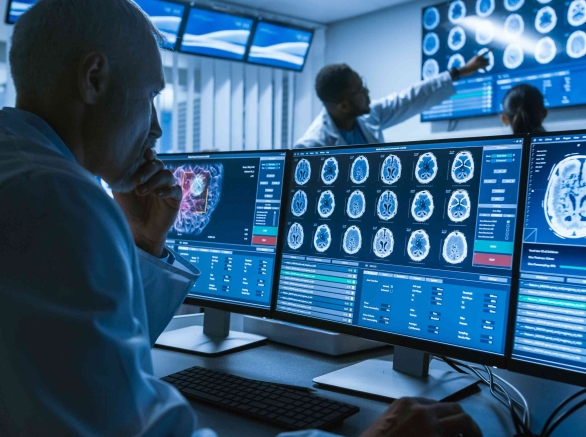March 25, 2024
A large team of Exponent scientists have collaborated to author "Computer Engineering Applications in Electronic, Biomedical, and Automotive Systems," a book released through Nova Science Publishers.
From quantum computing and medical robotics to wearable electronics, Computer Engineering covers a broad range of applications in electronics, medicine, and transportation where advances in robotics, embedded systems, and sensors are creating a bold future. Across ten chapters, Exponent scientists and engineers draw on their broad experiences working across multiple vendors and manufacturers of computer systems to share industry case studies in the following chapters:
Wearable Electronic Devices and Technologies — Hossein Kouhani, Kyle Murray, Zach Lamport, and Surya Sharma explore the transformative impact of miniaturization, artificial intelligence, and wireless technology on consumer products, as well as forthcoming trends in this field, emphasizing key features, potential pitfalls, and crucial safety considerations.
Robotics Computation and Sensors — Daniel Palmer focuses on robotics as a meeting point for several disciplines, while examining the electrical and computational aspects of robotics applications. He describes options available to designers for achieving cutting-edge robotic performance through the use of state-of-the-art on-board computational hardware.
Applied Image Processing and Computer Vision for Materials Science & Engineering — Surya Sharma, Janille Maragh, Susan Han, Chongyue Yi, and Cathy Chen deliver a tutorial on classical image processing techniques and computer vision for material science applications including defect inspection techniques, particle size distribution analysis for quality control, and estimating hardness and reflectivity properties of matter.
Integrated Circuits Application in Automotive Environments — Yike Hu and Xiang Wang describe the applications of integrated circuits as vehicles evolve toward autonomous, connected, electric, and shared mobility. The authors detail stringent standard requirements for the integrated circuits in the unique automotive environment and discuss failure mechanisms related to semiconductor devices as well as applicable root-cause analysis techniques.
Electronics Thermal Design for Optimum Chip Cooling — Qiming Zhang and Farooq Siddiqui address key thermal factors in the conceptual design stage of an electronic system. Using overheating examples in electronic devices, their chapter covers different thermal materials used for effective heat removal from electronic chips and emerging thermal systems, as well as future chip-cooling challenges.
Process Controls and Lean Manufacturing with a Computer Chip Manufacturing Perspective — Catrice Kees, Melissa Mendias, and Rebecca Routson describe how utilizing both Lean Manufacturing and Six Sigma can aid in implementing a robust process controls system in the manufacturing of integrated circuits. Introducing statistical process control charts and industry rules of thumb, the chapter also covers methods to reduce waste in semiconductor manufacturing.
Quantum Computation: From Hardware Challenges to Software Engineering Tools and Technologies — Gavin Scott, Matthew Pooley, and Paloma Ocola discuss software tools and technologies designed for enabling computer scientists and engineers to explore quantum computing approaches. The authors cover how to develop associated algorithms without requiring users to have a detailed knowledge of quantum mechanics.
Battery Management Systems: From Consumer Electronics to Electric Vehicles — Michelle Kuykendal and Melissa Mendias investigate the various failure modes of lithium battery systems and the corresponding mitigation capabilities of battery management systems. The authors address the implications of these systems for rapidly evolving electrical vehicle battery pack technologies.
Advanced Driver Assistance Systems: Achieving High-Reliability & Low-Latency — Michelle Kuykendal, Melissa Mendias, Sean Scally and Liyu Wang look into how to measure the performance of ADAS features such as evaluating how vehicle systems respond to vehicle movements while discussing the strengths and limitations of radar, ultrasonic, and lidar sensors.
Medical Robotics and Computing — Yulia Malkova, Anirudh Sharma, and Nadia Barakat offer a chapter on commercially successful robotic devices that have received Food and Drug Administration approval while emphasizing the importance of using computational modeling and simulation for designing, validating, and verifying these devices, as well as conducting clinical trials.

"Computer Engineering Applications in Electronic, Biomedical, and Automotive Systems"
Access the full version for purchase here.
Insights

![SOFTWARE & COMPUTER ENGINEERING [EECS]](/sites/default/files/styles/hero_teal/public/media/images/GettyImages-1341115371.jpg?itok=Z9q5t2ON)




















